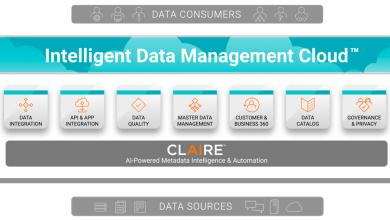
by Pratyush Khare, Vice President, Systems Engineering, Asia Pacific & Japan, Pure Storage

For quite some time, flash has already served as the obvious choice for any performance – or latency-sensitive workload in organisations across Asia Pacific. According to ReportLinker’s latest findings, Asia Pacific had the highest share of the 3D NAND flash memory market globally – and the continuous rise of data centres is only seen to fuel the demand for flash in the region.
Since its foray into the enterprise storage arena, flash has been knocking down hard disk tiers from top to bottom. Currently, there is only one tier left where disk drives still maintain a market share advantage: nearline, capacity-focused drives. This may be the lowest tier of online data storage, but it also represents a huge portion of bytes being stored and accounts for more than 70% of hard drive capacity shipped each year. This is the tier that flash will penetrate the next.
There is no question about the advantages of flash over legacy storage mediums such as disk or tape, but the main holdback has always been the cost. However, the disk or flash total cost of ownership (TCO) cutover is closer than many people may realise.
The price-per-bit for NAND flash is declining at a rate much faster than that of nearline hard drives. This, combined with the power, space, and cooling savings, higher performance, and better reliability of flash will soon result in hard drives becoming the less cost-effective option.
Reducing Media Cost
The first-order cost is always going to be the media itself. Currently, the cost-per-bit of a hard drive is still lower than the densest flash, but there are several key trends that are changing this.
First, all the major tier 1 flash manufacturers are demonstrating significant density increases this year, with over 200 layers of stacked 3D NAND in some cases. This increase in density will translate into better cost efficiency, as well as further improve power and space savings. Second, if analyst predictions hold, NAND prices overall are expected to decline through most of 2023, continuing a trend that began in late 2022.
Towards Better Energy Efficiency
Energy demand in Southeast Asia alone is estimated to grow by 3% on average until 2030, and a key driver is businesses’ increasing reliance on data infrastructure.
As a result of rising energy costs, energy consumption by information technology has become not just a concern from an environmental standpoint, but now also a significant economic one.
When looking at TCO, energy consumption will play an even more outsized role in 2023 and beyond, and infrastructure that is more power efficient will have an even greater economic advantage over the competition. As flash density continues to increase, power efficiency will surpass hard drives and thus contribute to a lower effective cost.
Based on a recent ESG report, all-flash systems can use up to 84% less energy, compared to competitive all-flash alternatives.
Elevated Performance
In two key ways, the flash performance advantage over disk can translate into cost advantages.
First, given low disk performance even in workloads with modest performance requirements, users may still end up with stranded capacity. While spinning drives may hold 20TB, the cost-per-bit might not be optimal if the system taps out at 16TB. Flash doesn’t have this issue because read performance stays predictable even as drives fill up, unlike hard drives.
Second, any storage environment that focuses on resiliency will have a redundancy strategy which may involve storing multiple copies of data for example, in addition to keeping spare capacity around in the case of a failure.
This means that the performance of any one device is a variable in the equation used to determine how much redundancy needs to be built into the system. Many years ago, hard drives had gotten large enough that after a drive failed, rebuilds would take so long that adopting dual parity strategies was necessary to ensure business resiliency. Today that can be triple parity or more.
With flash devices, faster rebuild times mean less bits need to be dedicated to resiliency structures, translating to better effective cost efficiency. Some flash vendors offer robust, automatic resiliency tuning that takes all these aspects into consideration, without requiring users to determine what RAID level they need to set.
Better Reliability
Annualised failure rates (AFR) of all-flash systems are significantly lower than the industry benchmarks for spinning disks and also lower than industry SSD averages. If drives are more reliable, this goes into the same resiliency considerations as above.
But beyond that, it also means that more reliable devices need fewer replacements, translating to lower costs. While most customers with support contracts don’t feel the cost directly, the cost of this unreliability is baked into the cost of those very support contracts. This is one reason why traditional storage vendors’ support costs would skyrocket after four years.
On the other hand, all-flash systems promise better reliability and prevent users from having to undergo disruptive, forklift upgrades every four to five years.
Marching Towards the Crossover Point
The simple truth is that no one today continues to buy spinning drives because they’re better, but only because they’re cheaper. In almost every way, flash memory is superior to spinning magnetic storage, and where flash is already better, those advantages are increasing. While flash is still behind disk in cost, the road to the disk/flash crossover point is getting shorter and shorter. The dream of an all-flash data centre will soon become accessible for most organisations in Asia Pacific.




